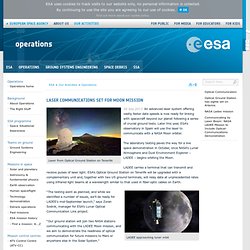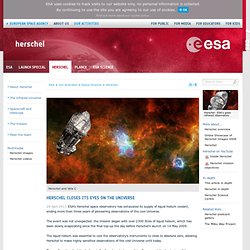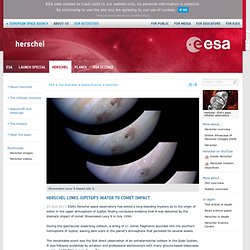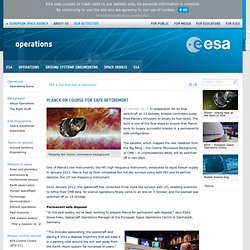

NASA. Mars Science Laboratory Curiosity Rover Animation. NASA's Next Mars Probe Arrives at Launch Site. As NASA's Curiosity rover celebrates one year on Mars, the space agency has begun final preparations for the launch of its next Red Planet mission later this year.

The Mars Atmosphere and Volatile Evolution spacecraft, or MAVEN, arrived at NASA's Kennedy Space Center in Florida on Friday (Aug. 2), just three days before the one-year anniversary of Curiosity's dramatic Mars landing. MAVEN is now sitting in a cleanroom, where engineers are testing and fueling the orbiter ahead of its planned Nov. 18 launch from Kennedy toward the Red Planet. [NASA's MAVEN Mission to Mars: Photos] "We're excited and proud to ship the spacecraft right on schedule," David Mitchell, MAVEN project manager at NASA's Goddard Space Flight Center in Greenbelt, Md., said in a statement Monday (Aug. 5). "But more critical milestones lie ahead before we accomplish our mission of collecting science data from Mars. Studying Martian air Mars has lost most of its atmosphere to space over the eons.
A U.S. S LADEE Mission. Laser Communication System Sets Record with Data Transmissions to and from Moon. NASA's Lunar Laser Communication Demonstration (LLCD) has made history using a pulsed laser beam to transmit data over the 239,000 miles between the moon and Earth at a record-breaking download rate of 622 megabits per second (Mbps).

LLCD is NASA's first system for two-way communication using a laser instead of radio waves. It also has demonstrated an error-free data upload rate of 20 Mbps transmitted from the primary ground station in New Mexico to the spacecraft currently orbiting the moon. "LLCD is the first step on our roadmap toward building the next generation of space communication capability," said Badri Younes, NASA's deputy associate administrator for space communications and navigation (SCaN) in Washington. "We are encouraged by the results of the demonstration to this point, and we are confident we are on the right path to introduce this new capability into operational service soon.
" Since NASA first ventured into space, it has relied on radio frequency (RF) communication. Laser communications set for Moon mission / Operations. Laser communications set for Moon mission Laser from Optical Ground Station on Tenerife 30 July 2013 An advanced laser system offering vastly faster data speeds is now ready for linking with spacecraft beyond our planet following a series of crucial ground tests.

Later this year, ESA’s observatory in Spain will use the laser to communicate with a NASA Moon orbiter. ESA. Robotic Exploration of Mars.
2016. Herschel closes its eyes on the Universe. Herschel and Vela C Herschel closes its eyes on the Universe 29 April 2013.

Herschel links Jupiter’s water to comet impact. Shoemaker-Levy 9 impact site G Herschel links Jupiter’s water to comet impact 23 April 2013 ESA’s Herschel space observatory has solved a long-standing mystery as to the origin of water in the upper atmosphere of Jupiter, finding conclusive evidence that it was delivered by the dramatic impact of comet Shoemaker-Levy 9 in July 1994.

During the spectacular week-long collision, a string of 21 comet fragments pounded into the southern hemisphere of Jupiter, leaving dark scars in the planet’s atmosphere that persisted for several weeks. The remarkable event was the first direct observation of an extraterrestrial collision in the Solar System. Pléiades 1B : Jupiter en ligne de mire. Planck on course for safe retirement / Operations. Planck on course for safe retirement Mapping the cosmic microwave background 21 October 2013 In preparation for its final switch-off on 23 October, mission controllers today fired Planck’s thrusters to empty its fuel tanks.

The burn is one of the final steps to ensure that Planck ends its hugely successful mission in a permanently safe configuration. The satellite, which mapped the relic radiation from the Big Bang – the Cosmic Microwave Background, or CMB – in unprecedented detail, will be switched off in two days. One of Planck’s two instruments, the HFI high-frequency instrument, exhausted its liquid helium supply in January 2012. Since January 2012, the spacecraft has conducted three more sky surveys with LFI, enabling scientists to refine their CMB data. Permanent safe disposal “In the past weeks, we’ve been working to prepare Planck for permanent safe disposal,” says ESA’s Steve Foley, Spacecraft Operations Manager at the European Space Operations Centre in Darmstadt, Germany.
Gaia, notre galaxie révélée. Gaia, the satellite (2 of 5) Television - Videos - 2013 - 10 - Gaia's preparation in Kourou - Establishing shot of Kourou Spaceport and Sunshield tests in Clean Room. Television - Videos - 2013 - 10 - Gaia's preparation in Kourou - Sunshield deployment time lapse sequence x 7. Countdown to launch of ESA’s billion-star surveyor / Gaia / Space Science. Gaia sunshield deployment time lapse sequence Countdown to launch of ESA’s billion-star surveyor 21 October 2013 ESA’s billion-star surveyor Gaia will be launched from Europe’s spaceport in Kourou on 20 November to begin a five-year mission to map the stars with unprecedented precision.

Gaia’s main goal is to create a highly accurate 3D map of our Milky Way Galaxy by repeatedly observing a billion stars to determine their positions in space and their movement through it. Other measurements will assess the vital physical properties of each star, including temperature, luminosity and composition. Gaia will map the stars from an orbit around the Sun, near a location some 1.5 million km beyond Earth’s orbit known as the L2 Lagrangian point. Gaia mapping the stars of the Milky Way The spacecraft will spin slowly, sweeping its two telescopes across the entire sky and focusing their light simultaneously onto a single digital camera, the largest ever flown in space – it has nearly a billion pixels. Gaia launch postponement update / Gaia / Space Science. Rosetta flybys / Highlights / Space Science.